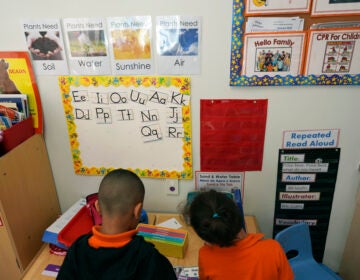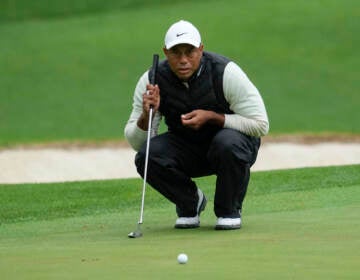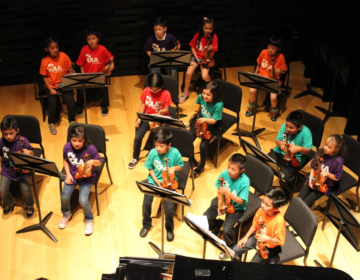Philly School District extends successful STEM program to middle years
STEM, the acronym for science, technology, engineering and math, is a big buzzword in education.
It’s also a main selling point for the expansion of one of the School District of Philadelphia’s elite magnet schools, George Washington Carver High School of Engineering and Science, down into the seventh and eighth grades.
“The district approached us with a plan for the expansion, and we came up with a plan for the middle school,” said Carver principal Ted Domers. “Rather than grow out, let’s grow down.”
Carver, a 750-seat school near Temple University in North Philadelphia, is consistently ranked among the top few public high schools in the city and boasts a 99 percent graduation rate, according to its Pennsylvania School Performance Profile.
The expansion, to add 60 seats for seventh and eighth grade each, will give students a chance to get a jump on courses such as computer science and engineering.
Domers said there were two main reasons for adding younger students to the school.
First was the desire to create a pipeline into the high school. Carver already acts as a “feeder school” with four neighborhood K-8 schools around Philadelphia: Blaine, Kelley, Southwark and Arthur.
The second was a realization, he said, that “all of our ninth-graders take computer science and engineering as a part of introduction to our course … those introductory classes are not developmentally inappropriate for middle school students.”
Technology and professional development associated with the expansion were supported by a $200,000 grant from the Philadelphia School Partnership, a nonprofit that gives money to “innovative” schools of all affiliations. The district also invested in $660,000 in curriculum expenses alone.
Wanted: Middle school magnet seats
Around 300 students applied for the 120 open seats at Carver. The district has already made its selection for the incoming classes.
Kenneth A. Carruth III, the parent of a rising seventh-grader, said the option of sending his son to Carver convinced him to try out a Philadelphia public school for the first time.
“The reason that I like Carver is because it has that charter/private school feeling,” said Carruth, whose son had been going to Russell Byers Charter School. The school is a good fit because his son’s favorite subject is math, he said.
Carruth’s daughter now goes to Friends’ Central, a private school on City Line Avenue, but he said he’d consider sending her to Carver as well.
A common refrain among parents in Philadelphia is there aren’t enough competitive elementary and middle school seats in district-run schools. Local catchment schools in wealthier areas of the city, such as Greenfield Elementary in Center City, perform well on tests and tend to mobilize more funds from the school community. As those schools become more popular among socially engaged urban parents with the means to live in high-rent areas, they are able to take fewer students from across the city.
“There aren’t that many options and the options that are available are not very good,” said Carruth, who lives in the Frankford section of North Philadelphia. If not for Carver, “we were thinking of homeschooling my son,” he said.
During the planning process, Domers said, some parents expressed similar sentiments. “Especially from the [Carver] high school parents … something I heard over and over again was, ‘I wish you had started this earlier,'” he said.
The district seems to be hearing that message. District spokesman Fernando Gallard said the expansion is “a part of our focus to increase seats that are working for our students.”
The expansion is not meant to draw kids away from neighborhood K-8 schools, according to Domers.
“We see it as a fairly small group,” he said. “But I agree there’s not the middle school option, and there’s certainly not the middle school STEM program, that we offer.” Still, the proliferation of niche schools has created a fractured picture of education in Philadelphia, with students shuffling between public, private, charter and parochial seats.
By the numbers, students are coming not just from other district-run schools. According to Domers, about 50 percent of incoming middle years students are coming from charters, private and parochial schools. “With our middle school, we’re actually bringing more kids back to district than traditionally in our high school,” which has a district/other split of 60/40.
WHYY is your source for fact-based, in-depth journalism and information. As a nonprofit organization, we rely on financial support from readers like you. Please give today.




